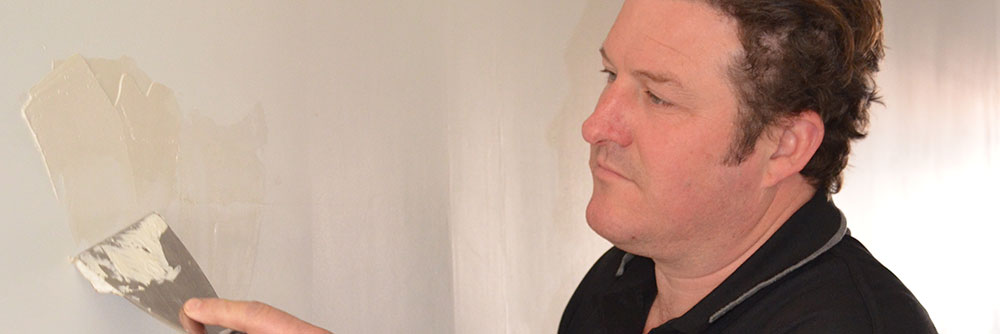
With all the loose old plaster removed, use a flat trowel to coat the exposed lath with plaster base coat, being sure to work the material into the spaces between the lath.
#PLASTER REPAIR HOW TO#
In this video, This Old House host Kevin O’Conner shows you how to patch holes in plaster walls. If the lath behind the old plaster is sound, patching is a matter of troweling on layers of mud.

How to Patch Plaster Walls if the Lath is Good Condition The patch is now ready to prime and paint. On the third day, spread another coat, and after it dries, smooth it gently with a damp sponge. Gently scrape it smooth and apply a second coat. Using a 6-inch taping knife, scrape the patch area smooth, and cover the patch with a thin layer of ready-mix joint compound. Smooth the Top Coat Photo by Ben Stechschulte Use a plastering trowel to smooth the mix flush with the wall surface scrape any excess off the wall.

Wait until the scratch coat is firm to the touch-about an hour-then mix up a new batch of plaster to a slightly thinner consistency-closer to that of buttercream frosting. Trowel on the Second Coat Photo by Ben Stechschulte Rough up the patch by scratching it with a scarifier, then scrape any blobs off the wall. Keep this layer recessed by half the thickness of the original plaster. Using a margin trowel, smear the mix against the old plaster edge, as shown, and over the lath. In a clean bucket with cool tap water, mix Plaster Magic patching plaster to the consistency of natural peanut butter. Apply the Scratch Coat Photo by Ben Stechschulte Wait until the conditioner dries-about 20 minutes-before going to Step 4. Wipe up any drips or overspray with a damp rag. To prevent this, saturate those surfaces with conditioner. Wet the Substrate Photo by Ben Stechschulteĭry lath and the exposed plaster edge will suck water out of wet plaster before it has a chance to harden. Wait 15 minutes, then fill all unmarked holes with a squirt of plaster adhesive. Vacuum the holes and spray them with plaster conditioner. If it misses, pencil a mark by that hole. Using a 3/16-inch masonry bit, drill holes every 3 inches around the damaged area, about 1 inch from the edge. Stabilize the Wall’s Edge Photo by Ben Stechschulte Then you can screw new or loose lath to it, as if it were a stud. If there’s no stud to anchor a lath end, slip a piece of lath into the cavity and screw it to the back of the existing ones, parallel with the studs. Use drywall screws, and always drill pilot holes to avoid splitting the wood. Replace any missing lengths of lath, and refasten all loose pieces.

How to Repair Lath and Plaster in 6 Steps 1. It’s a common practice to replace missing plaster with a piece of blue board (a wall board made to be coated with plaster), but troweling on base coat is faster. Finish coats came after the base had dried. Several coats were applied, the first keying into the spaces between the lath to make a stable base. Into the 20 th century, plaster was applied over wood lath spaced half an inch or so apart over the studs or ceiling joists. If the lath is in good condition and you need to repair holes, patching is a matter of troweling on layers of mud. Don’t use so-called patching plaster sold at home centers, it’s much harder than the wall’s original plaster, and it sets in the blink of an eye. It’s better to use a softer, slower-setting lime-based plaster, like the one developed for Big Wally’s line of plaster-repair products, takes about an hour to set, isn’t prone to cracking or delaminating, and needs no sanding, which keeps dust to a minimum. How Do You Repair a Hole in Lath and Plaster Walls?įor lath and plaster repair, it’s important to use good techniques and the right materials. First, you’ll repair the lath and then patch the hole. If you’re dealing with damaged lath and plaster walls-for example gaping holes in the wall because of electrical work-here are techniques you can use to repair them.


 0 kommentar(er)
0 kommentar(er)
